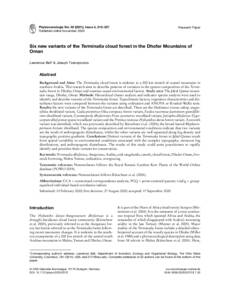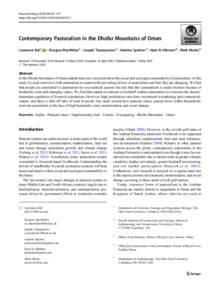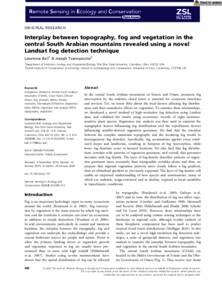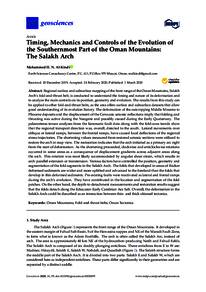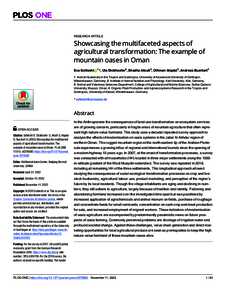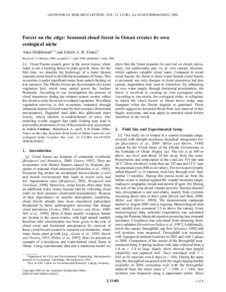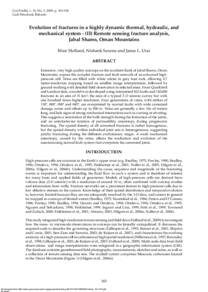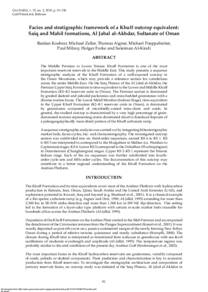وثيقة
Six new variants of the terminalia cloud forest in the Dhofar mountains of Oman.
المعرف
DOI: 10.1127/phyto/2020/0370
المصدر
Phytocoenologia. v. 50, 4, p. 313-327
المساهمون
Tzanopoulos, Joseph., مؤلف
الدولة
Germany.
مكان النشر
Stuttgart
الناشر
Gebruder Borntraeger Verlagsbuchhandlung.
ميلادي
2021-01-01
اللغة
الأنجليزية
الملخص الإنجليزي
Background and Aims: The Terminalia cloud forest is endemic to a 200 km stretch of coastal mountains in southern Arabia. This research aims to describe patterns of variation in the species composition of the Termi-nalia forest in Dhofar, Oman and examine causal environmental factors. Study area: The Jabal Qamar mountain range, Dhofar, Oman. Methods: Hierarchical cluster analysis and indicator species analysis were used to identify and describe variants of the Terminalia forest. Topoclimatic factors, vegetation characteristics and disturbance factors were compared between the variants using ordination and ANOVA or Kruskal-Wallis tests. Results: Six new variants of the Terminalia forest are described. These are the Dodonaea viscosa subsp. angus-tifolia shrubland variant, Cadia purpurea-Olea europaea forest variant, Euclea racemosa-Jasminum grandiflo-rum shrubland variant, Gymnosporia dhofarensis-Ficus sycomorus woodland variant, Jatropha dhofarica-Zygo-carpum dhofarense sparse woodland variant and the Premna resinosa-Hybanthus durus forest variant. A seventh variant was identified, which was previously described by Kürschner et al. (2004); the broad-leaved Blepharis-permum hirtum shrubland. The species composition and environmental conditions indicate that two variants are the result of anthropogenic disturbance, whilst the other variants are well separated along fog density and topographic position gradients. Conclusions: Distinct variants of the Terminalia forest in Jabal Qamar result from spatial variability in environmental conditions associated with the complex topography, monsoon fog distributions, and anthropogenic disturbance. The results of this study could assist practitioners to rapidly identify and prioritise these variants for conservation.
ISSN
0340-269X
قالب العنصر
مقالات الدوريات

